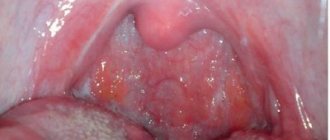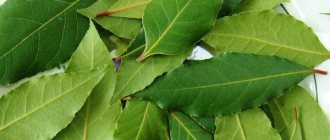Causes: Who Can Develop Ozena?
Until now, medicine cannot give an exact answer as to why people develop a foul runny nose. Some experts believe that this is facilitated by a congenital anomaly, due to which the width of the nose is increased or, conversely, the size of the nasal cavity is shortened and the paranasal sinuses are underdeveloped.
Others argue that ozena is a degeneration of the mucous membrane, which is accompanied by its disintegration. It is for this reason that a runny nose acquires a foul odor. It is possible that membrane metaplasia is associated with insufficient tissue nutrition, which leads to the disintegration of the bone skeleton and degeneration of the epithelium.
Some medical scientists believe that a foul runny nose is of an infectious nature, since all patients were found to have a predominant amount of pathogenic microflora in the secretions of the nasal cavity. The most reliable reason is that ozena develops after a functional disorder of nerve endings. Most likely, damage to the pterygopalatine ganglion of nerves leads to destruction of the mucous and bone tissue of the nose.
Features of treatment. Antibiotic therapy
The basis of conservative therapy for Klebsiella infections is the prescription of antibacterial drugs that are active against pathogenic microorganisms. In most cases, they are administered intravenously.
The most effective antibiotics are Streptomycin and Levofloxacin. Based on the results of bacteriological culture, Oxacillin, Tseporin, Gentamicin, Metacycline, and Erythromycin can also be prescribed.
In order to locally destroy pathological microflora and moisturize the mucous membrane, the nasal cavity is washed with disinfectant solutions (alkali, potassium permanganate, hydrogen peroxide, saline solution).
If necessary, iron, zinc, and folic acid supplements are prescribed. For restless conditions and insomnia, use mild sedatives. To support the body's defenses - immunomodulating drugs.
Sometimes autohemotherapy is performed - intramuscular injection of one's own blood, which helps strengthen the immune system, restore the functions of the endocrine system, and remove waste and toxins from the body.
Goldstein tamponade is effective in treating ozena - a tampon soaked in a mixture of iodine and glycerin is inserted into the nasal cavity for several hours. The procedure facilitates the process of removing crusts and promotes short-term relief of unpleasant odors.
For the purpose of deodorization, menthol-based drops with boric acid, paste or candles with chlorophyllocarotene are used.
Ozena treatment also has a psychological side. Patients are forced to be isolated from society due to the unpleasant odor emanating from them. Support from family and friends and work with a psychologist are an important component of rehabilitation.
Physiotherapy methods promote rapid tissue regeneration and reduce the manifestation of unpleasant symptoms (electrophoresis, iontophoresis, laser therapy, ultraviolet insolation).
Symptoms: how to understand that a patient is developing ozena?
The very first sign of the development of a foul runny nose is increased dryness of the nasal mucosa. This symptom is observed when breathing freely. Patients may also feel as if there is a foreign object in the nasal cavity.
The formation of an excessive amount of crusts forces a person to constantly clean his nose. In some cases, the secretion dries so tightly that it blocks the air supply. But after mechanical removal of dry formations, the patient can breathe normally again.
The next stage of ozena is a decrease in the sense of smell, and over time the person completely ceases to smell. Since atrophy of the mucous membrane is accompanied by a fetid odor, and the patient cannot feel it due to loss of smell, those around him begin to avoid communicating with the patient. In parallel with ozena, otitis media occurs, tinnitus appears, and hearing decreases. If atrophic metaplasia spreads to the nasopharynx and trachea, the mucous membrane of the throat dries out in a person, crusts form, which interfere with normal breathing.
Foul runny nose Ozena and its treatment
A runny nose is already a rather unpleasant symptom, which is accompanied by difficulty breathing and constant nasal discharge. It does not allow a person to fully communicate with the people around him and live a normal life without eternal handkerchiefs and nose drops. It turns out that a common runny nose (rhinitis) is not the worst thing! Fetid runny nose ozena - this is really a problem that cannot be gotten rid of with ordinary nasal drops!
Fetid rhinitis ozena - a disease of the nasal mucosa
Such an unpleasant term as a fetid runny nose is a disease of the nasal mucosa, in which an atrophic process develops in the mucous membrane itself and in the bone walls of the nasal cavity.
This process is accompanied by the formation of a special secretion, which dries and forms a dense layer of fetid crusts covering the entire surface of the mucous membrane.
It is impossible to cure fetid rhinitis without the help of specialists. You shouldn’t even try, as your actions can only make the situation worse. If you do not start adequate treatment in time and do not complete it, this illness can become an obsessive companion for the rest of your life. It is important to understand that this is not an ordinary runny nose; with ozena, the nasal mucosa is seriously ill, and therefore long, painstaking treatment will be required to get rid of this unpleasant phenomenon.
Causes and symptoms of ozena
What exactly is the cause of the development of foul-smelling runny nose Ozena has not yet been precisely established. According to some authors, the whole point is in the congenital excessive width of the nose, shortening of the anterior-posterior dimensions of the nasal cavity, underdevelopment of the paranasal sinuses and a wide facial skull.
Other experts are convinced that runny nose occurs as a result of degeneration of the mucous membrane, which disintegrates and emits an unpleasant odor.
Whatever led to the development of this disease, it should be treated only after consulting a doctor.
Most often, with a fetid runny nose, patients complain of a feeling of dryness in the nose, a large number of dried crusts and a characteristic unpleasant odor. In addition, nasal breathing noticeably worsens and the sense of smell is reduced, and sometimes completely absent.
When performing rhinoscopy, yellow-green or brown crusts are clearly visible, covering the mucous membrane of the passages and often filling all the free space. These crusts can also spread to the midpharynx and nasopharynx, larynx, and even the trachea. After all the crusts are removed, a viscous yellow-green exudate will be observed in places on the mucous membrane.
At first, the symptoms of the atrophic process in the nasal cavity are localized in the inferior concha, then gradually it covers all the walls, and the nasal cavity becomes wide.
Conservative treatment of foul-smelling runny nose
Conservative treatment of fetid runny nose involves measures aimed at eliminating dryness in the nasal cavity, removing crusts and general deodorization of the nose.
Nasal rinsing is prescribed with a 3% solution of hydrogen peroxide, a faint pink solution of potassium permanganate and just saline solution. To carry out this procedure, a special nasal watering can or Esmarch mug is used.
To remove foul-smelling crusts, Gottstein tamponade is used, which can only be performed by a doctor. During the procedure, the nasal cavities are filled with a gauze swab, which is soaked in a 1-2% solution of iodine in glycerin. The duration of the procedure is 2-3 hours; when the tampons are removed, the nose is cleared of crusts.
To get rid of the unpleasant odor, treatment is prescribed with chlorophyll-carotene paste, which is made according to the recipe of F. T. Solodky. Every day a suppository of paste is inserted into both halves of the nose for a month. The course of treatment with this remedy must be repeated every 4 months.
NasmorkuNet.ru
Diagnostics
When examining a patient, an ENT specialist can detect ozena based on the following signs:
- Atrophy of the mucous membranes;
- Formation of foul-smelling crusts;
- Decreased olfactory function.
Ozena affects all tissues of the nose, thins the blood vessels, degenerates the ciliated membrane, and thins the bone. Anterior rhinoscopy makes it possible to assess the condition of the mucous membrane and see the resulting brownish crusts.
Unlike syphilis and tuberculosis, fetid runny nose does not affect the mucous membrane until an infiltrate and characteristic lesions form.
Bacterial examination in patients with ozena often reveals 2 types of pathogenic microflora:
- Klebsiella ozena (occurs in most patients);
- Corynobacteria, Proteus.
A parallel examination of the body can reveal the presence of endocrine system disorders and autonomic nervous system disorders. These pathological changes lead to dystrophy in the nasal cavity. By destroying proteins, ozena causes a fetid odor, because during the atrophy process unpleasant-smelling substances are formed - hydrogen sulfide, skatole and indole.
What is ozena?
The fetid runny nose, symptoms, and treatment of this disease were studied by the Egyptians and Indians 1000 years BC. This disease can be recognized by chronic atrophy of the nasal mucosa, which even affects the bones, foul-smelling discharge (with an aroma similar to the smell of a sea octopus) and constantly appearing crusts that make nasal breathing difficult. To alleviate the patient's condition, doctors use symptomatic treatment. In the final stage of the disease, patients undergo spontaneous recovery.
Causative agent of ozena
The bacterium Klebsiella ozena is a conditionally pathogenic microorganism that has serious resistance to unfavorable environmental conditions - it calmly tolerates both cooling to sub-zero temperatures and heating to 65 degrees. Approximately 80% of patients with ozena have the bacterium Klebsiella, which is also called the “ozena bacillus”. This pathogenic microorganism also provokes other diseases of the throat, larynx, and trachea, which are also accompanied by the release of a liquid, foul-smelling secretion.
When infected with Klebsiella ozena, treatment is specific, since the microorganism is very resistant. Previously, antibiotics were used for therapy - tetracyclines, chloramphenicol, ampicillin and others, but studies have proven that Klebsiella strains are resistant to them. Today, doctors use new modern drugs that can act on Klebsiella, so self-medication with antibiotics is not recommended for ozena.
Ozena - reasons
Fetid runny nose ozena does not always appear predictably; doctors have several possible causes of the disease. According to the anatomical theory, a predisposition to ozena is associated with congenital enlarged nasal passages and underdeveloped paranasal sinuses. Pathophysiologists suggest that the impetus for the development of a fetid runny nose is a history of inflammatory diseases of the nasal cavity. According to the infectious theory, bacteria are “to blame” for the occurrence of ozena. There are also genetic, endocrine and other theories.
Modern doctors have identified several factors that are triggers for the appearance of a foul runny nose:
- injuries to the facial skeleton or nose;
- damage to the facial nerves;
- infectious diseases - measles, rubella, diphtheria, chicken pox, scarlet fever;
- chronic foci of infection - sinusitis, rhinitis, tonsillitis, pharyngitis;
- bad habits, unhealthy diet, low quality of life.
Why is ozena dangerous?
Ozen disease can be dangerous due to complications - ozeotic pharyngitis and laryngitis, chronic sinusitis, inflammatory processes of the eye (blepharitis, conjunctivitis, keratitis) and ear (eustachitis, chronic otitis). Long-term complications of ozena are also possible: pneumonia, trigeminal neuralgia, meningitis, bronchitis and other diseases. Due to frequent ingestion of the secretions released during lakes, gastrointestinal diseases can develop - gastritis, dyspepsia, constipation, flatulence. Mental complications are also possible - depression, neurasthenia, apathy.
Treatment: effective ways to eliminate ozena
Treating the disease is quite difficult and often comes down to eliminating disturbing symptoms. In order to eliminate ozena, specialists can use different methods of therapy:
- Local character;
This therapy consists of deodorizing the nasal cavity and removing crusts that have formed. To rinse the cavity, sodium chloride is used, adding iodine to the solution. A mixture of solutions of sodium chloride and bicarbonate, salicylic acid and water can also be used.
Suppositories with Solodkov ointment are used, which have an antibacterial effect and eliminate the foul odor of discharge. Before introducing suppositories into the nostrils, the nasal cavity is irrigated with medicinal solutions. Treatment is carried out in courses at least 3 times a year. It is also recommended to lubricate the nasal passages with Lugol's solution at home.
Elimination of dry mucous membranes is carried out using hydrogen peroxide, saline and potassium permanganate. So that the patient can independently irrigate the nasal cavity, you can use an Esmarch mug or a teapot with a comfortable spout.
To rinse properly, you need to insert the spout into the nostril and lean forward a little. In order for the medicine to come out freely, you need to open your mouth slightly during the procedure. With proper nasal irrigation, the solution will be introduced into one nostril and flow out of the other or through the mouth. The washing process should be monitored, as liquid can easily enter the Eustachian tube and cause inflammation.
A specialist can carry out treatment according to Gottstein. To do this, use a tampon soaked in glycerin and 2% iodine. It is left in the nostril for 2-3 hours. After removing the tampon, the foul-smelling crusts are removed. An ENT specialist may also recommend lubricating the nasal cavity with a 2-5% solution of iodoglycerin.
- Conservative general;
General therapy includes the use of iron supplements and antibiotic therapy. In addition, patients are prescribed the necessary vitamins and undergo autohemotherapy. Physical procedures have good results: diathermy, iontophoresis, ionization of indoor air.
- Surgical;
This therapy is required when patients need to narrow their nasal cavities. For this purpose, autografts are used, which are injected into the septa and submucosal tissue. Allografts and various synthetic substances are also used.
The safest method is to use fat, cartilage or bone, which is injected under the mucous tissue. After surgery, patients experience a rapid reaction of the membrane, expressed in the formation of blood vessels, glands and tissue. This significantly improves the condition of patients. Radical surgical intervention according to Lautenschläger consists of moving the bone of the maxillary cavity to the nasal septum. The separated inner wall of the adnexal cavity is fixed in a certain position. Over time, it fuses with the shell and septum, narrowing the lumen.
Treatment of ozena
A runny nose is familiar to absolutely every person, regardless of age. Most often it is a companion to colds, the body’s reaction to allergens, and the introduction of pathogenic microorganisms.
However, in 1–2% of cases it indicates serious changes in the functionality of the mucous membrane, causing its degeneration - ozena.
Patients develop a putrid odor when exhaling through the nose, which causes a decrease in social activity. In addition, irreversible atrophic processes in the nasal cavity occur. It is impossible to get rid of the disease on your own; the patient needs long-term complex treatment.
Ozena (from Greek - fetid runny nose) is a progressive inflammation of the nasal mucosa, which is accompanied by gradual cell atrophy. In complicated cases, the process spreads to the bone tissue of the nasal turbinates, which leads to thinning of the bone.
The disease develops in 3 stages, each of which is characterized by a specific clinical picture.
At the initial stage, the symptoms are similar to ordinary rhinitis:
- problems with smell;
- secretion of viscous mucus;
- periodic formation of gray crusts with an unpleasant odor;
- breathing problems;
- dry mucous membranes.
The patient, due to a decrease in sense of smell, may not notice an unpleasant odor indicating the development of the disease. Those around him clearly feel it. Questions and comments about this can trigger the development of social and emotional problems.
In the acute stage, mucus quickly dries and foul-smelling crusts form in the nose, which are difficult to remove. The nasal passages noticeably expand (sometimes so much that the posterior wall of the nasopharynx and the entrances to the Eustachian tubes become visible through them). The pathology affects not only the sense of smell, but also the taste buds. The atrophic process begins, the picture of which is visible during rhinoscopy.
During the transition to the last stage of ozena, the secretion of mucus and the formation of fetid crusts stop. It is believed that a process of self-healing occurs, but atrophy is irreversible - the person remains with problems for life.
According to medical statistics, the disease is diagnosed more often in women during puberty. However, it can occur in children and the elderly.
Causes
Ozena has been known for a long time - the first mention was recorded 1 thousand years BC. Until now, medicine cannot give a reliable answer as to why the patient develops fetid rhinitis.
Possible causes of the disease:
- infectious lesion of the nasal cavity (Klebsiella ozena, Corynebacterium, Proteus);
- damage to the autonomic nerve trunks, trigeminal nerve, cervical sympathetic ganglia;
- disruptions in the endocrine system;
- chronic diseases of the ENT organs (tonsillitis, pharyngitis, rhinitis);
- acute pathologies of infectious etiology (measles, rubella, diphtheria).
In addition, factors contributing to the development of ozena are identified - injuries to the nose and facial bones, genetic predisposition, features of the anatomical structure of the skull, nasopharynx, low immunity. Bad habits, poor nutrition, iron and vitamin D deficiency, and an unfavorable social environment increase the risks.
Sometimes the disease occurs against the background of radiation therapy or uncontrolled long-term use of vasoconstrictor drugs.
It is likely that a combination of factors and reasons becomes the impetus for the development of ozena.
An unpleasant odor from the nose, which accompanies a person everywhere, causes emotional instability (neurasthenia, depression, depression, absent-mindedness, decreased concentration, impaired mental activity).
Lack of treatment provokes the development of various pathologies:
- eye diseases (conjunctivitis, blepharitis, keratitis, dacryocystitis);
- chronic sinusitis, including sphenoiditis, sinusitis;
- ozenous pharyngitis, laryngitis, larengotracheitis;
- decreased hearing acuity;
- inflammatory processes of the ears (eustachitis, otitis).
The danger of ozena is difficult to overestimate. Severe cases can lead to disastrous consequences that threaten not only health, but also life (meningitis, pneumonia, bronchitis).
Prolonged ingestion of purulent mucus causes problems with the gastrointestinal tract (gastritis, constipation, flatulence).
In a neglected state, irreversible deformation of the nose occurs.
How to treat
If a person has the first symptoms of ozena, treatment should be started immediately.
The disease can go away on its own many years after its onset. This does not mean that it does not need to be treated. Properly developed therapeutic regimens, compliance with all prescriptions and instructions of the doctor by the patient help to avoid serious consequences.
Considering that it is impossible to restore atrophied tissues, treatment of ozena is symptomatic. It can be conservative or surgical, depending on the stage of the disease.
Main therapeutic goals:
- elimination of unpleasant odors (deodorization);
- softening and removal of crusts from the nasal passages;
- impact on the pathogen;
- restoration of normal mucosal microflora.
In most cases, treatment is carried out at home; in case of significant damage, hospitalization of patients with ozena is indicated.
The basis of conservative therapy for Klebsiella infections is the prescription of antibacterial drugs that are active against pathogenic microorganisms. In most cases, they are administered intravenously.
The most effective antibiotics are Streptomycin and Levofloxacin. Based on the results of bacteriological culture, Oxacillin, Tseporin, Gentamicin, Metacycline, and Erythromycin can also be prescribed.
In order to locally destroy pathological microflora and moisturize the mucous membrane, the nasal cavity is washed with disinfectant solutions (alkali, potassium permanganate, hydrogen peroxide, saline solution).
If necessary, iron, zinc, and folic acid supplements are prescribed. For restless conditions and insomnia, use mild sedatives. To support the body's defenses - immunomodulating drugs.
Goldstein tamponade is effective in treating ozena - a tampon soaked in a mixture of iodine and glycerin is inserted into the nasal cavity for several hours. The procedure facilitates the process of removing crusts and promotes short-term relief of unpleasant odors.
For the purpose of deodorization, menthol-based drops with boric acid, paste or candles with chlorophyllocarotene are used.
Ozena treatment also has a psychological side. Patients are forced to be isolated from society due to the unpleasant odor emanating from them. Support from family and friends and work with a psychologist are an important component of rehabilitation.
Physiotherapy methods promote rapid tissue regeneration and reduce the manifestation of unpleasant symptoms (electrophoresis, iontophoresis, laser therapy, ultraviolet insolation).
During surgical treatment, the nasal passages are narrowed. The operation is performed only in agreement with the patient. To achieve the goal, scientists have developed several methods:
- displacement of the lateral walls of the nose;
- implantation of acrylic sticks;
- implantation of an alloplast under the mucous membrane of the walls and septum of the nose (paraffin and petroleum jelly are most often used);
- autograft transplantation.
The most effective is considered to be two operations - first implantation (implantation, transplantation), then after a couple of years - displacement of the side walls of the nose.
It is almost impossible to completely get rid of a foul runny nose, even through surgery. It is important to prevent the development of the disease. Preventive measures will help with this.
Treatment with traditional methods: are there any effective recipes?
Remedies from alternative traditional medicine help cope with the symptoms of ozena if they are used regularly and the most appropriate individual method of therapy is selected. For general strengthening of the body and to remove crusts and foul odor, you can use the simple but effective recipes described below.
To activate the mucous membranes, you can prepare a healing decoction of sage, mint and wormwood. All dry plants are mixed in equal quantities. Take 5 tbsp. prepared mixture and pour boiling water into a liter thermos. Leave for 2 hours. This infusion is drunk a glass 3 times daily.
You can instill your nostrils with a mixture of plant oils: sea buckthorn, milk thistle, rosehip. Drops should be used daily, no more than 3 times.
Menthol and olive oils are also suitable. They should be taken in equal quantities and mixed well. It is recommended to lubricate the nasal passages with this ointment three times a day.
Take 10 grams of honey, 5 grams of mint oil. Mix the mixture well and lubricate the nose three times a day.
Inhalation from boiled potatoes in their jackets helps a lot. Once the steam has softened the crusts, they can be easily removed. Any oil is instilled into a clean nasal cavity.
You can prepare an ointment of both interior lard and propolis. The lard is melted to a liquid state and mixed with an identical amount of propolis. Warm up by steaming, without bringing to a boil. The liquid ointment is filtered through a sieve and poured into a glass jar. Lubricate the nose twice a day.
Often, a fetid runny nose and atrophy of the mucous membrane contribute to the occurrence of chronic inflammation of the throat, paranasal sinuses, and trachea. The mucous membranes of the eyes and ear canals can also become inflamed.
Treatment
Conservative treatment and medications
This type of treatment involves removing crusts from the nasal cavity, moisturizing and deodorizing. The patient is prescribed a nasal rinse with hydrogen peroxide, a solution of potassium permanganate, or saline. Rinsing is carried out using a special nasal watering can to prevent fluid from entering the auditory tube.
Goldstein tamponade is often used in the treatment of this disease. This is a procedure in which a gauze swab coated with a solution of glycerin and iodine is inserted into the nasal cavity. After a few hours, this tampon is removed along with the softened crusts.
Ozena is sometimes treated with chlorophyllocarotene paste , inserting suppositories with this paste into the nasal sinuses every day for a month. This procedure helps eliminate nasal stench.
A significant improvement in the condition can be achieved by inhaling ionized air , as well as after diathermy procedures.
A patient with ozena is often prescribed the following drugs: furazolidone, furagin, furatsilin, biogenic stimulants, sedatives, as well as a course of multivitamins and preparations containing iron.
Surgical
Surgical intervention is performed for physiological disturbances in the structure of the nose in a patient with ozena.
The purpose of this operation is to narrow the nasal cavity, carried out by introducing an implant into the tissue located behind the mucous membrane. After this procedure, connective tissue begins to actively form, which leads to a narrowing of the nasal cavity.
material Ivalon is now more often used as an implant . During surgery, the patient is injected with hormones that accelerate the growth of connective tissue and improve the development of blood vessels.
In difficult cases, a more radical operation is performed, in which the wall of the maxillary sinus is pressed against the nasal septum, after which it is fixed with a tampon. As a result of this procedure, the nasal concha fuses with the nasal septum.
Traditional methods
Some folk remedies help to alleviate the patient’s condition during ozena, and sometimes to completely recover:
- Infusion of mint, wormwood and sage. These herbs are taken in equal proportions, mixed, then 5 tablespoons are placed in a thermos and poured with a liter of boiling water. The collection is infused for two hours. You need to take a glass orally three times a day, you can rinse your mouth with this infusion.
Sea kale. Dried seaweed is thoroughly ground in a coffee grinder to a powder. This powder must be inhaled through the nose. Seaweed helps get rid of crusts in the nasal cavity.- Potato. Inhaling the vapors of freshly boiled potatoes through the nose helps alleviate the patient's condition.
- Ledum. 30 g of finely crushed wild rosemary is mixed with 200 g of vegetable oil and left in the dark for a month, after which the grounds are squeezed out. It is recommended to instill the resulting tincture every 3 hours into both nostrils.
- Vegetable oils. Alternately instilling milk thistle, sea buckthorn or rosehip oil into the nose helps. You need to bury it at least 3 times a day. This will help eliminate the unpleasant odor and also make it easier to remove crusts.









